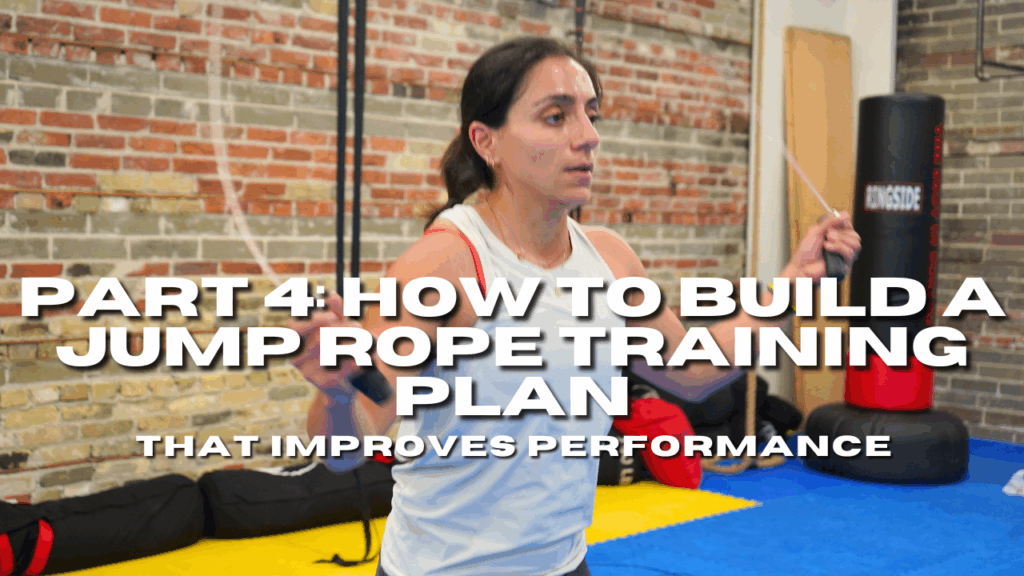
You’ve learned the “why” behind jumping rope. You’ve got the technique dialed in. And you’ve seen how it builds coordination, endurance, and reactive power.
Now it’s time to turn it into a repeatable system.
In this final part of the White Lion Strong Jump Rope Series, we’ll show you how to structure jump rope training—whether you’re using it as a warm-up, conditioning tool, GPP builder, or even as part of a skills-based recovery day.
This isn’t about grinding through sweat sessions to “burn calories.” This is about building athletes, not burning out bodies.
🏗️ Jump Rope Training Goals: Choose Your Track
Before you build your jump rope plan, identify your primary reason for using it. Here are four common goals and how skipping supports each:
1. 🧠 Skill + Coordination Development
- Purpose: Sharpen rhythm, improve timing, increase movement efficiency
- Strategy: Low-impact, consistent sessions 3–5x/week for 5–10 minutes
2. 🫀 Aerobic Conditioning
- Purpose: Improve general endurance and cardiovascular capacity
- Strategy: 2–3x/week, 10–20 minutes total; moderate pace, long durations
3. ⚡ Anaerobic Capacity / Power Output
- Purpose: Improve work capacity, recovery between efforts, explosiveness
- Strategy: High-intensity intervals (HIIT), EMOMs, and density sets
4. 🔁 Warm-Up or GPP Accessory Work
- Purpose: Prep for lifting/sport or improve athletic durability
- Strategy: 3–10 minutes of rhythmic work, flow drills, or paired circuits
📅 Sample Weekly Layouts
🟢 Beginner / General Fitness (3x per week)
| Day | Focus |
| Mon | 5-minute skill drill (basic bounce step, boxer step) as warm-up |
| Wed | 4 rounds: 30s skip + 30s rest + mobility drill |
| Fri | 5-minute EMOM: 20 skips + 10 bodyweight squats |
Perfect for general movers or new clients building rhythm and footwork.
🟡 Intermediate / Lifters (4x per week integration)
| Day | Focus |
| Mon | 3 mins skipping + shoulder mobility pre-lift |
| Tue | Post-lift finisher: 4 rounds – 30s skip + 6 kettlebell swings |
| Thu | Jump rope ladder: 20-40-60-80-100 skips with controlled rest |
| Sat | Active recovery: 10 mins alternating boxer step + hip mobility |
Integrates seamlessly with lifting programs and builds GPP without burning out the CNS.
🔴 Advanced / Athlete (5x per week with high intensity)
| Day | Focus |
| Mon | Warm-up: 5 min flow (skip, lateral hop, high knees) + contrast sprints |
| Tue | 10-min EMOM: 20 double-unders + 5 burpees |
| Wed | Recovery: 10 min skip flow + breathwork |
| Fri | Jump rope + plyo circuit (skip 1 min, 5 box jumps x 4 rounds) |
| Sat | Rope tempo intervals: 3x 3-minute rounds w/ 1-min rest (fight simulation) |
For fighters, field athletes, or hybrid athletes looking to increase performance.
⚠️ Common Programming Mistakes to Avoid
| Mistake | Why It’s a Problem | What to Do Instead |
| Skipping too long, too soon | Risk of shin splints or Achilles irritation | Start with short durations (3–5 mins), build weekly |
| Always jumping the same way | Repetitive strain, lack of skill development | Use a variety of footwork patterns (boxer step, side-to-side, etc.) |
| Pairing with high-impact lifts on same day | CNS overload or joint fatigue | Use skipping on low CNS days or at lower intensity |
| Only using it as cardio punishment | Burns mental engagement | Make it skill-based, focused, and goal-driven |
🧊 Recovery & Support Work for Rope Training
Even though skipping is lower-impact than running, it’s still plyometric in nature. Long-term success comes from balance and support.
Recovery tips:
- Use mobility drills for calves, ankles, hip flexors, and quads
- Stretch feet and ankles post-session
- Self-massage with lacrosse ball under arches and calves
- Do tissue-prep warm-ups (ankle rocks, pogo hops) before jumping
Optional tools:
- Use slant boards for calf eccentrics
- Mini-bands for hip/glute activation
- Barefoot skipping on turf/mats to build foot strength (for advanced athletes only)
🔁 Sample Jump Rope Finishers
Add these to the end of a strength or power workout:
✅ Conditioning Finisher:
- 3 rounds:
- 1 min jump rope
- 10 kettlebell swings
- 10 push-ups
- Rest 30s
- 1 min jump rope
✅ Coordination Finisher:
- 5 rounds:
- 30s boxer step
- 30s side-to-side jump
- 30s single leg skip (switch legs each round)
- 30s boxer step
✅ Hybrid Plyo Finisher:
- 4 rounds:
- 45s skip
- 5 broad jumps
- 10 air squats
- 60s rest
- 45s skip
🦁 Build Athletes, Not Exhausted Movers
Jump rope training isn’t about chasing sweat or Instagram tricks. It’s about creating athletes who move with precision, endurance, and intent. Done right, it fits seamlessly into strength programs, skill development days, or team conditioning work.
It builds bounce, balance, and breathing control.
And sometimes, it builds more grit than the barbell ever could.
🏁 Wrap-Up: Jump Rope as a Long-Term Training Tool
When you program jump rope intentionally, you create better movers, not just tired ones.
You develop:
- A stronger aerobic engine
- Better rhythm and control
- More foot and ankle resilience
- Faster CNS activation for explosive lifts or sport transitions
Now that you’ve finished this blog series, you’ve got the tools to:
- Start jumping with purpose
- Avoid the common pitfalls
- Scale skipping to fit your athletes, your lifters, or your own performance goals
👊 White Lion Strong Challenge
Try this for 7 days:
- Jump rope for 5 minutes a day
- Vary your footwork
- Stay relaxed, focused, and rhythm-driven
Track how it impacts your training, posture, breathing, and recovery.
Tag @whitelionstrong on Instagram and show us how you’re building your engine.